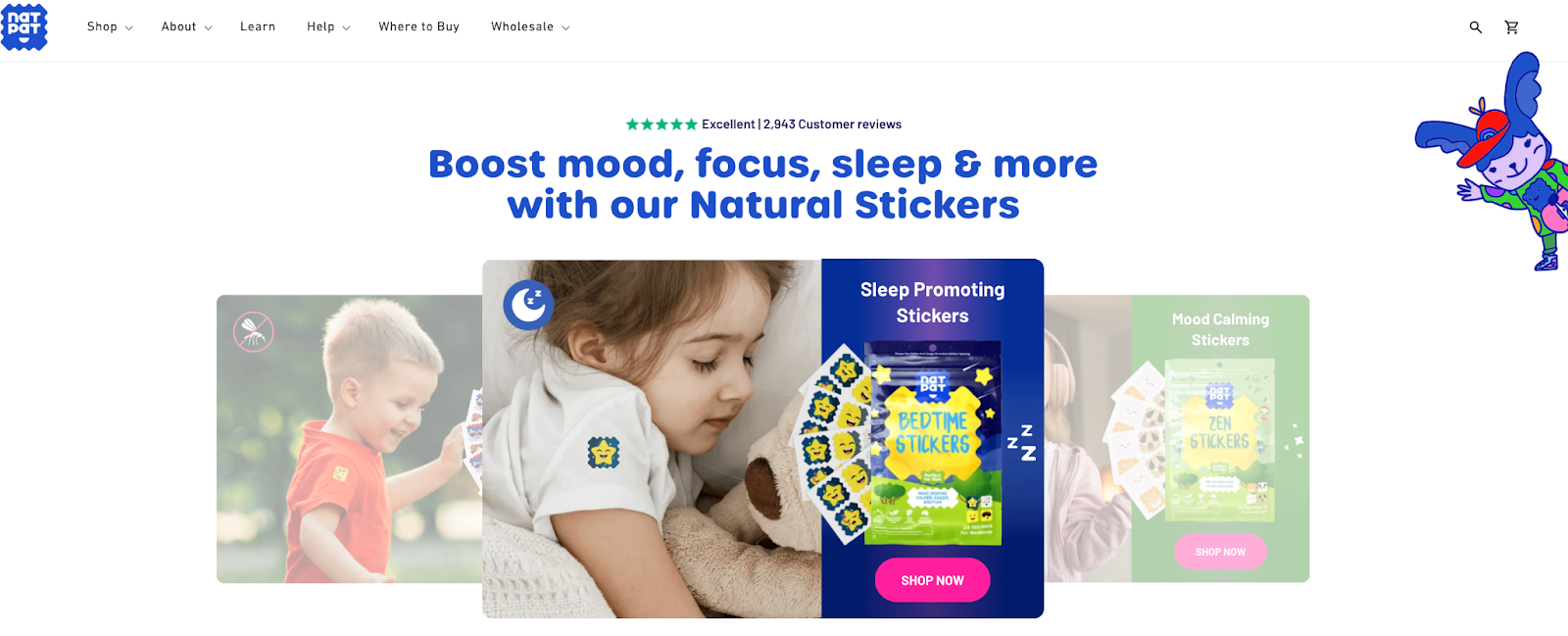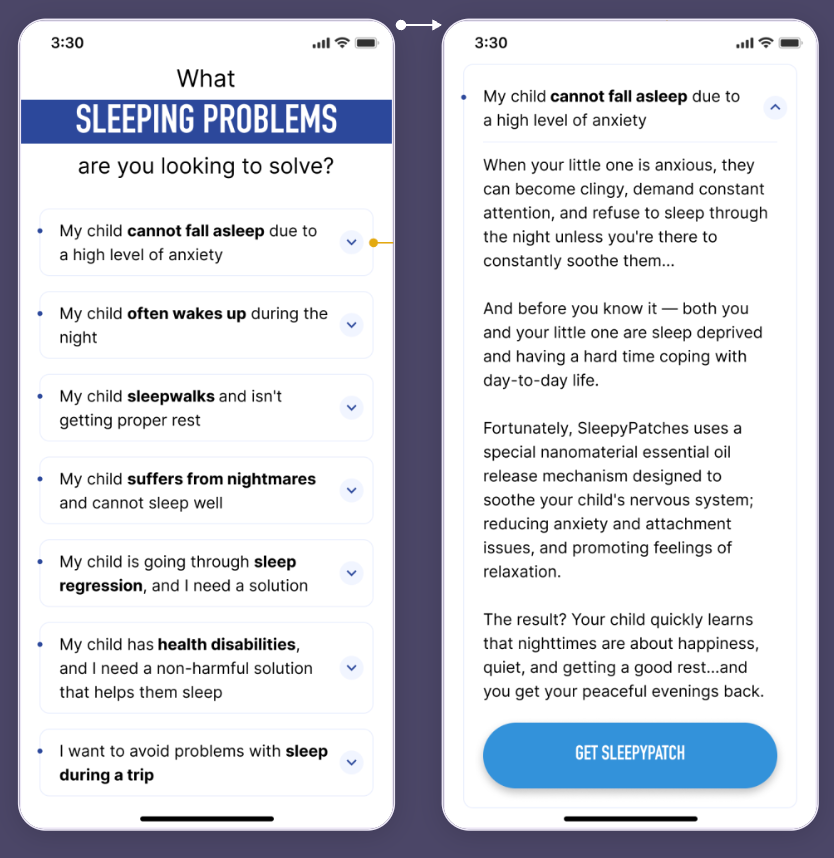Key Takeaway
By creating personalized content blocks based on customer insights, we increased conversion rate by 23% and average revenue per user by 28% for NATPAT. These blocks addressed specific customer pain points, enabled self-segmentation, and created more fulfilling customer journeys that linked customer intent to product benefits.
Client Overview
NATPAT offers innovative, child-friendly solutions to everyday challenges through essential oil stickers and skin patches. Their products address specific needs such as sleep support, mood regulation, and bug bite relief. Operating on a direct-to-consumer e-commerce model, NATPAT sells through its online store, targeting customers looking for simple, effective, and family-oriented solutions.

Opportunity Background
NATPAT's products are unique and innovative, with clear benefits such as portability, ease of use and child-friendly designs. Despite these advantages, the user journey from product detail page to checkout could be improved.
Research showed that many visitors struggled to understand how NATPAT's products fit their needs. The lack of accessible, relevant information was causing users to leave without converting. The challenge was to reorganize product page content to clarify product value, address user pain points, and better align with customer intent.
Solution
We conducted on-site questionnaires and email surveys for each product to gather user insights. These surveys differentiated between buyers and non-buyers to test audience intent. Since non-buyer data didn't resonate or impact conversions (according to the first test iteration), we focused exclusively on buyer responses. This allowed us to identify key motivations and pain points specific to high-intent users for SleepyPatch, ZenPatch, and MagicPatch.
We used insights from the buyer survey to create dynamic, personalized content blocks on the landing pages. These blocks directly addressed specific pain points and allowed users to self-segment based on their unique concerns.
Key elements of these personalized content blocks include:
- Positioning below the hero section, these blocks used survey-driven language to reflect user concerns and offer tailored solutions. Each block walked users through their problems to the ideal outcome with NATPAT products.
- Expandable dropdowns that kept the page concise while providing detailed information. Dropdowns automatically closed when a new one was opened, maintaining a clean and streamlined experience.


Results
In the first iteration of this experiment, we collected data from non-buyers. However, the insights derived from this group did not lead to statistically significant improvements. The updated content blocks for SleepyPatch, fueled by buyer data insights, significantly improved user engagement and conversion metrics:
The results were similarly positive when these updates were applied to NATPAT's other products. ZenPatch saw a 10.41% increase in CVR and a 13.64% increase in ARPU, while MagicPatch saw a 6.8% increase in CVR and a 15.2% increase in ARPU.